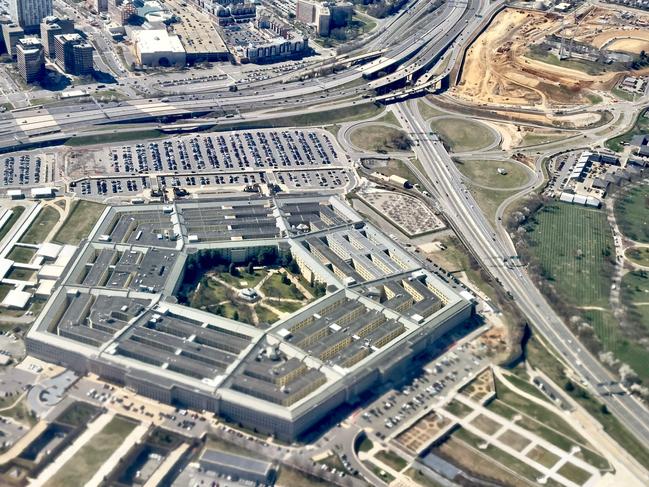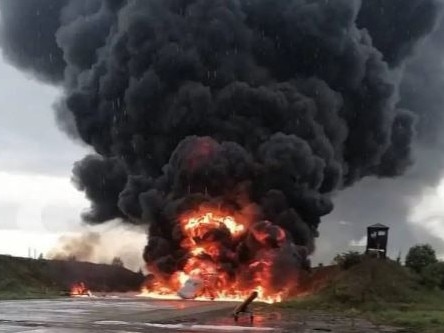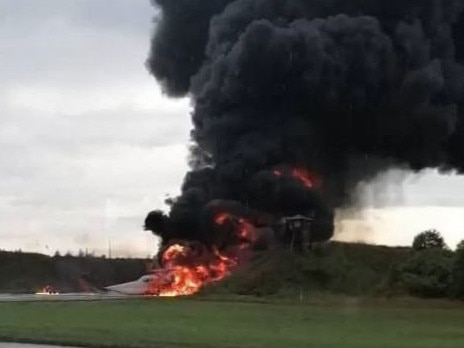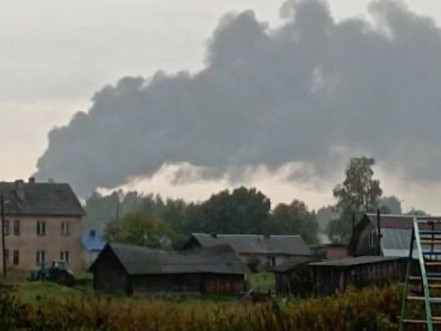Ukraine Russia War: General Armageddon fired after Wagner mutiny
Russia’s ‘General Armageddon’, known for his ruthless methods, has been ‘relieved from his post’ in a remarkable fall months after leading the war in Ukraine. Here’s why.
World
Don't miss out on the headlines from World. Followed categories will be added to My News.
Russia’s “General Armageddon”, named for his ruthless methods, has been fired after a series of Ukraine battlefield losses and his cozy relationship with leaders of the Wagner mutiny.
Sergei Surovikin, the head of Russia’s aerospace force, took command of the military operation in October but had not been seen in public since the Wagner group’s mutiny in June.
The 56-year-old veteran of Soviet and Russian wars in Afghanistan, Chechnya and Syria was seen as an ally to Wagner leader Yevgeny Prigozhin.
When Surovikin was named commander of Russia’s forces in Ukraine in October 2022, Prigozhin and Chechen leader Ramzan Kadyrov warmly welcomed the news.
In May, when Prigozhin furiously accused Russian military leaders of failing to provide him with sufficient ammunition, Surovikin was officially named as an intermediary between Wagner and the army.
Burning tensions between Wagner and the defence ministry came to a head on the night of June 23 to 24, when Prigozhin called for the toppling of Russia’s military command and sent an armoured column towards Moscow.
Surovikin then made a highly unusual video appeal.
Unshaven, scowling and with one hand resting on his right thigh, he slowly enunciated a call for Prigozhin to stop.
“We are one blood. We are fighters. I urge you to stop,” he said in military uniform, staring down the camera.

“Before it’s too late, you have to obey the will and orders of the elected president of Russia. Stop the armoured columns, return to your bases and settle any problems peacefully,” he said.
Less than 24 hours later, Prigozhin had turned his forces back and agreed a deal with the Kremlin to be exiled to Belarus.
But Surovikin made no further public appearances.
Surovikin’s time commanding Moscow’s forces in Ukraine was tumultuous and short-lived -- after just three months in the role he was replaced by chief of staff Valery Gerasimov, a nomination seen as a victory for the military’s top brass against Prigozhin.
Under Surovikin’s orders, Russian troops retreated from the city of Kherson on the Dnipro River in southern Ukraine.
It was a clear defeat for Moscow, although the delicate operation was carried out without any heavy losses on the Russian side and no other territory was given up.
The general was also behind Moscow’s campaign of bombarding Ukrainian energy infrastructure, which failed in its aim of crippling Ukraine during the winter.
After being replaced by Gerasimov, Surovikin remained a top military commander and his tough reputation endured.
RUSSIA DESTROYS UKRAINE SHIP
Moscow claims to have destroyed a Ukrainian military reconnaissance vessel near Russian gas infrastructure in the Black Sea, in the latest clash in the waterway since Moscow’s withdrawal from a major grain export deal.
Russia said one of its jets had destroyed the Ukrainian “reconnaissance boat” near Russian gas production facilities in the Black Sea.
No details were provided on the kind of boat which had been destroyed or where and when the destruction took place.
The incident came after the first civilian cargo ship sailing through the Black Sea from Ukraine recently arrived in Istanbul in defiance of the Russian blockade.
Attacks by both Ukraine and Russia have escalated in the Black Sea after Russia pulled out of the UN-brokered deal allowing safe passage of Ukrainian grain through the shipping hub.
Russia has bombed Ukrainian port infrastructure in sea and on the Danube.
Ukraine has attacked Russian ships in its waters and the Crimean Peninsula.
Following the withdrawal from the grain export deal, Moscow said last month that it would consider any ships nearing Ukraine in the Black Sea as potential military cargo carriers.
It also said its forces had downed two Ukrainian drones, 40 kilometres northwest of the Crimean peninsula on the Black Sea.
UKRAINE COUNTER-OFFENSIVE ‘FAILED’: US INTEL
The Ukraine counteroffensive funded and trained by the NATO alliance is set to “fail” in its key objective to cut off Russia’s land bridge to Crimea, according to US intelligence sources.
In a battlefield assessment briefed to the US Congress, Kyiv’s troops are not expected to reach the key city of Melitopol thanks to Russia’s extensive network of minefields and trenches.
The World War I style defensive strategy has slowed Ukraine’s advance despite billions spent on training and western supplied equipment including Leopard tanks and Bradley fighting vehicles.
Ukraine launched the counteroffensive in June to reach the Sea of Azov, but the US now believes that the principal objective won’t be reached before the end of the year, at least, people familiar with the forecast told The Washington Post.
The assessment came as the US approved the delivery of NATO F-16 fighter jets to Ukraine despite fears of overly escalating the conflict with Russia beyond its current borders.

Kyiv reported its fighters fought through a minefield north of Tokmak and are directly engaging the first line of Russian defences around the city, which stands between Ukraine’s ultimate goal to retake Melitopol and cut off Crimea.
They are advancing from Robotyne, about 80km away, but are not expected to get closer to Melitopol than several kilometres, according to US intelligence sources.
Gen. Mark A. Milley, chairman of the Joint Chiefs of Staff, said while Urkaine is not achieving its objectives, they’re degrading Russian forces and morale.
“I had said a couple of months ago that this offensive was going to be long, it’s going to be bloody it’s going to be slow,” he told The Post. “And that’s exactly what it is: long, bloody and slow, and it’s a very, very difficult fight.”
PUTIN’S PRIZED NUCLEAR BOMBER DESTROYED
New pictures have shown one of Vladimir Putin’s treasured Tu-22 supersonic missile bombers engulfed by flames after a “kamikaze” drone attack
The stunning pictures showed the shocking aftermath of the bold strike on Soltsy air base deep inside Russia.
According to a report in The Sun, photos taken from the site in Novgorod region appear to show the long-range supersonic missile carrier engulfed by flames.

Russian sources said that the drone strike “damaged” the nuclear aircraft.
But new photos from attack clearly show the multimillion-dollar warplane surrounded by flames
The attack at the military airport in the Novgorod Oblast – more than 800km from Ukraine – was reportedly led by a “helicopter style” kamikaze drone.

“The Kyiv regime carried out a terrorist attack using a copter-type UAV on a military airfield in Novgorod region,” the Russian defence ministry stated.
“As a result of the terrorist attack on the territory of the airfield, a fire broke out in the aircraft parking lot, which was promptly eliminated by fire brigades.
“One plane was damaged, but there were no casualties as a result of the terrorist attack.”
A Ukrainian Telegram channel disputed Russia’s account of the incident, declaring that two Tu-22M3 supersonic bombers were badly damaged during the strike.

The Institute for the Study of War cited a Russian insider source who also claimed that the fire damaged at least two aircraft.
Russian media sources stated that at least six Tu-22M3s have been relocated to the faraway Olenya air base on the Kola Peninsula following the strike.
The Soltsy airfield is known as a base for the Tu-22M3 bombers which have been used to target Ukraine.

The Tupolev Tu-22M3 was deployed for the first time by Russia in its war in Ukraine during the “carpet-bombing” of Mariupol.
They are reported to have 60 of the aircraft in operation.
It has an operational range of nearly 7000km, which puts all of Europe and the American east coast within its scope.
These Soviet-designed general-purpose air-dropped bombs with a high-explosive warhead are old but devastating in their indiscriminate damage.
The Tu22M can also carry Kh-15 nuclear or anti-radar missiles, as well as Kh-22 long-range naval strike missiles.
More Coverage
Read related topics:Russia & Ukraine Conflict




